August 2023
A Journalist Spreads Japan's Sento Culture to the World
-
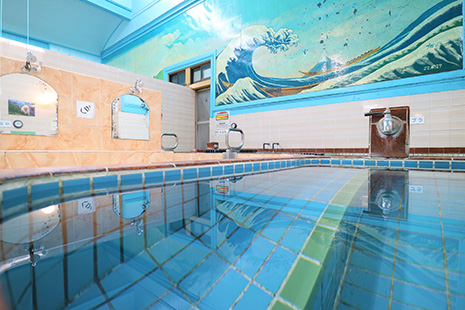
Arai-yu is a sento (public bathhouse) in Tokyo that features a powerful mural of waves with Mt. Fuji in the background (interior). -

Stephanie Crohin
Photo: Jordy Meow
-
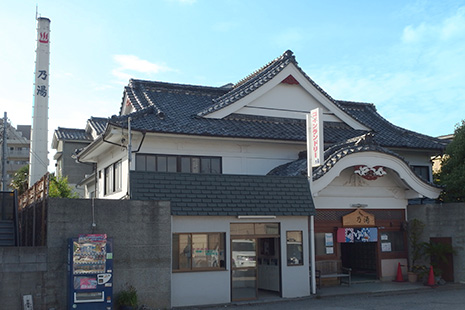
A Japanese sento (exterior) -
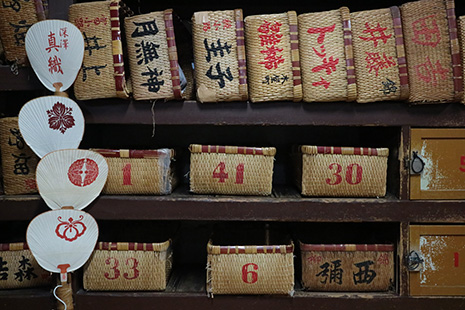
The Nishiki-yu in Kyoto (closed in 2022) featured uchiwa fans and baskets for clothes instead of lockers. -
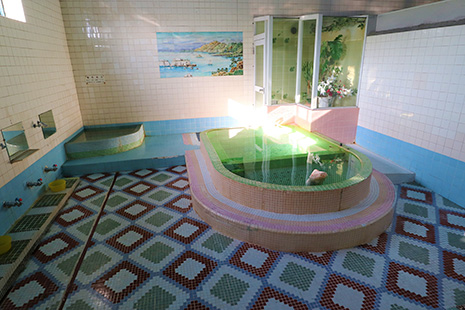
-
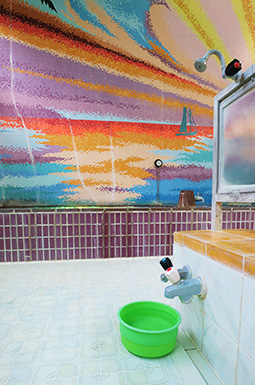
Sento Shirahama Onsen in Hyogo Prefecture (above) and Tsuru-no-yu in Tokyo (below) feature bathing areas with colorful walls and floors that create gallery-like spaces.

Japan is home to bathhouses called sento, which provide bathing services at a fixed fee to a broad range of customers. They are also called public bathhouses or simply baths (furoya). Stephanie Crohin, a native of France, is fascinated by these bathhouses. She has visited more than 1,000 sento so far, and is using social media, books, events, and other channels to share the charm of sento and the Japanese culture associated with them to the world.
Stephanie's first encounter with sento occurred in 2008, when she came to Japan as an exchange student. A friend invited her to visit a public bathhouse near her university.

Photo: Jordy Meow
"I was nervous at first because in France there is no custom of bathing in the same space with others, and at the time I could still speak only a little Japanese. But once I got into the big bath, I felt relaxed, and the owner and the regulars spoke with me in a friendly manner, which put me at ease. The warm atmosphere and the sense of local community fascinated me, and I started going every week."
Stephanie came back to Japan for work in 2012. When she began to feel burdened by her unfamiliar work in Japan, she remembered how she used to frequent the sento. "When I went back to the bathhouse I used to visit when I was a student, the owner remembered me, and I felt a sense of belonging. Going to the sento was a very healing experience for me," says Stephanie. Later, inspired by a wish to learn more about traditional public bathhouses, she visited sento all over Japan and began sharing her experience and knowledge on social media. In addition to her work as a company employee, she also worked as a bandai (receptionist at a sento) for six years.

"Many public bathhouses are run by individual families, and each one has a different appearance and atmosphere. The look of each sento reflects the unique historical imprint of the area and the family that runs it. Another charm of sento is that you can exchange greetings with visitors and enjoy casual conversation. A visit to the sento is a chance to learn about the everyday life of people who live in that area, which would otherwise remain unknown to ordinary travelers."
Another aspect of sento that Stephanie finds appealing is their art. Each bathhouse has its own distinct personality, from the traditional Japanese architecture of the building itself, through the murals and mosaic tiles on the walls of the bathhouse—which may depict scenes like Mount Fuji and seasonal flowers—all the way to the noren curtains on the doors, the wooden pails, and other small items. "Old-fashioned sento have a retro atmosphere," says Stephanie, "and their space is truly like an art gallery."
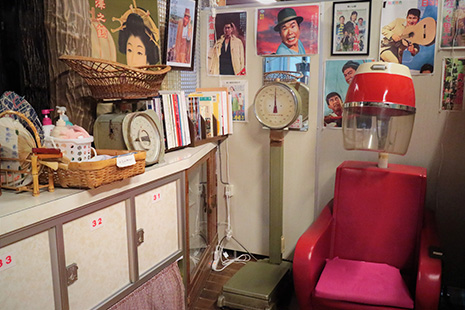
In recent years, the number of public bathhouses in Japan has been declining due to the growing custom of bathing at home, among other reasons, but the information Stephanie has shared has led to an increase in the number of visits to sento by younger generations of Japanese, who previously were not very familiar with them. Moreover, it is said that many people from overseas also commented on the information she sent, saying, "I want to travel around sento in Japan.
"Japanese onsen (hot springs) are famous around the world, but many people are still not familiar with sento. I would like to continue to provide information and hold events that will awaken the interest of many travelers and make them want to visit sento during their stay in Japan. I would also like to eventually introduce all of the sento in Japan."

Recently, in addition to her activities as a sento journalist, Stephanie has also started working as an interior designer, which has been her goal for many years. She wants to spread the appeal of public bathhouses to the world, and at the same time propose cozy interior design homes as an interior designer. With two irons in the fire, she will continue to pursue her passions.



